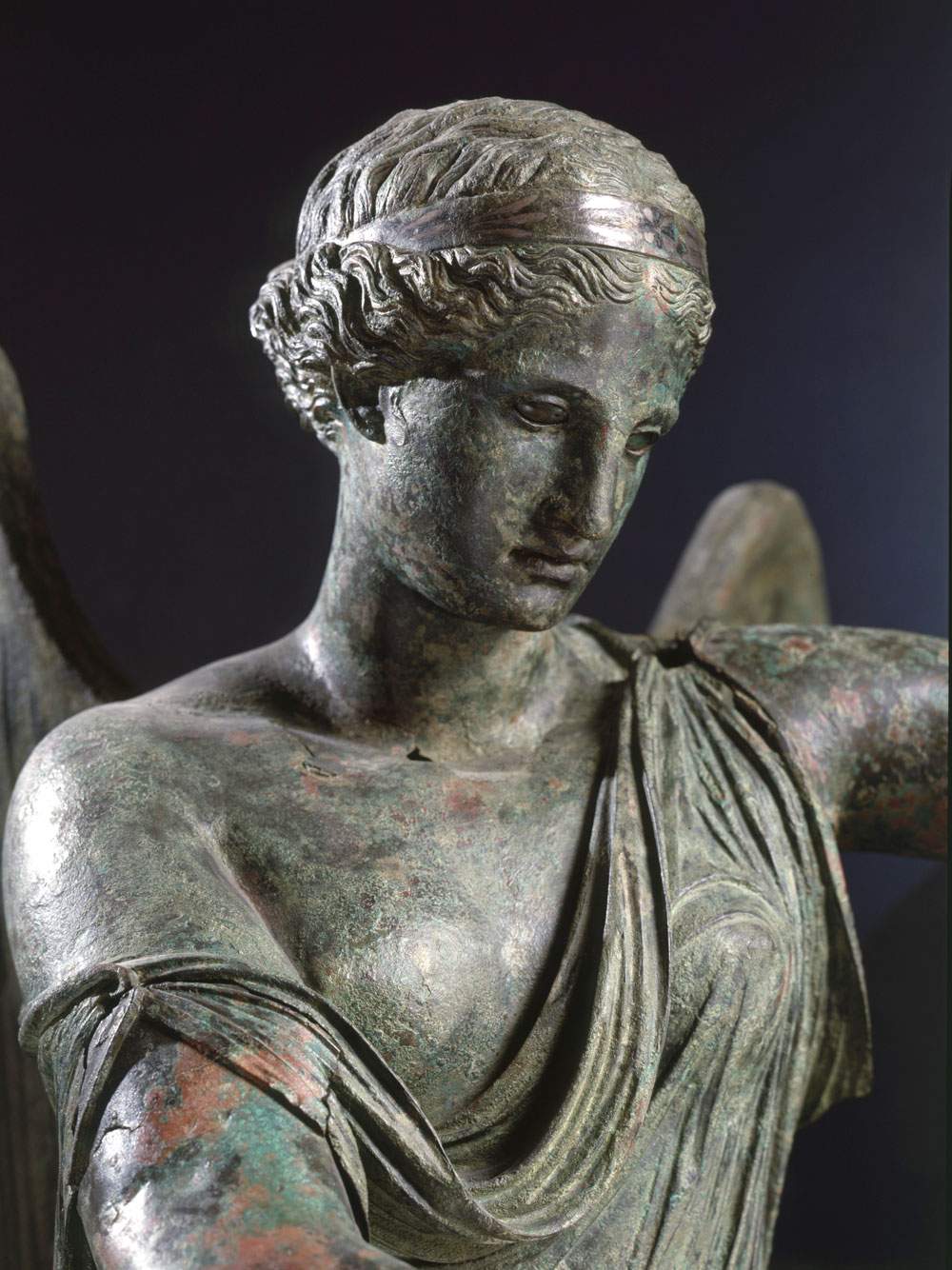Brescia, Winged Victory restored again. It will be placed in the renovated Capitolium
After two years of restoration, the Winged Victory, one of the most extraordinary bronze statues from the Roman era, returns to Brescia from November 20, 2020. It is considered among the most significant works of Roman art in terms of composition, material, and preservation, and it is also one of the few Roman bronzes from excavations that have come down to us.
The restoration was conducted by theOpificio delle Pietre Dure, sponsored by the Municipality of Brescia, the Brescia Musei Foundation, and the Soprintendenza Archeologia, Belle Arti e Paesaggio of the Provinces of Bergamo and Brescia, with the support of the Lombardy Region.
The restored Winged Victory will be placed in the renovated Capitolium of Brescia, whose new layout was designed by Spanish architect Juan Navarro Baldeweg, thus enhancing the archaeological area Brixia - Archaeological Park of Roman Brescia. Theunprecedented layout is at the forefront of international museography and is intended as a total work where respect for conservation, lighting and technological criteria is combined with care for materials. In fact, the choice of Venetian terrazzo floor refers to traditional Roman floors; a showcase table presents the bronze frames found with the Winged Victory in 1826. Other fragments of cornices are arranged on the western wall of the cell, in a pattern designed by the architect to recall the geometry typical of Roman-era decorations. Artificial light gives the room a timeless dimension.
The statue, made of bronze using the lost-wax casting technique, can be dated to around the mid-first century AD, perhaps inspired by older models. It was found in 1826, during archaeological excavations conducted in the area, in a cavity of the ancient temple, along with six imperial heads and hundreds of other bronze artifacts. The restoration work consisted of cleaning the sculpture, controlled removal of the materials that filled the statue and the 19th-century-era internal structure to which the wings and arms were attached, and finally the application of a protective material. Scientific investigations and examinations were also carried out aimed at a deeper understanding of the construction technology, as well as the chronology and origin of the statue itself. Teams from the Opificio delle Pietre Dure, the Fondazione Brescia Musei, and the Department of Mechanical and Aerospace Engineering at the Sapienza University of Rome devoted great care to the design and construction of a new, highly technological internal support for the statue to support the wings and arms, which were found detached from the central body in 1826 and which until two years ago were supported by a device devised in the 19th century.
The Winged Victory will be accompanied by a rich schedule of exhibition events at the Santa Giulia Museum and Capitolium:
Juan Navarro Baldeweg. Architecture, Painting, Sculpture. (through April 5, 2021);
Alfred Seiland. Imperium Romanum. Photographs 2005-2020 (March 2021);
Archaeological Stages. Curatorial interventions by Francesco Vezzoli for the Winged Victory of Brescia (April 2021);
Vittoria. The long journey of a myth (September 2021);
Emilio Isgrò, a retrospective for Santa Giulia and the Brescia Roman Archaeological Park (April 2022), anticipated by the monumental installation Incancellabile Vittoria (October 2020) in the Brescia metro.
For info: vittorialatabrescia.it; bresciamusei.com
Hours: Tuesday through Sunday from 10 a.m. to 6 p.m. Closed Mondays.
Image: Winged Victory before restoration. Photographic archives Civici Musei di Brescia - Fotostudio Rapuzzi.
 |
| Brescia, Winged Victory restored again. It will be placed in the renovated Capitolium |
Warning: the translation into English of the original Italian article was created using automatic tools. We undertake to review all articles, but we do not guarantee the total absence of inaccuracies in the translation due to the program. You can find the original by clicking on the ITA button. If you find any mistake,please contact us.




























